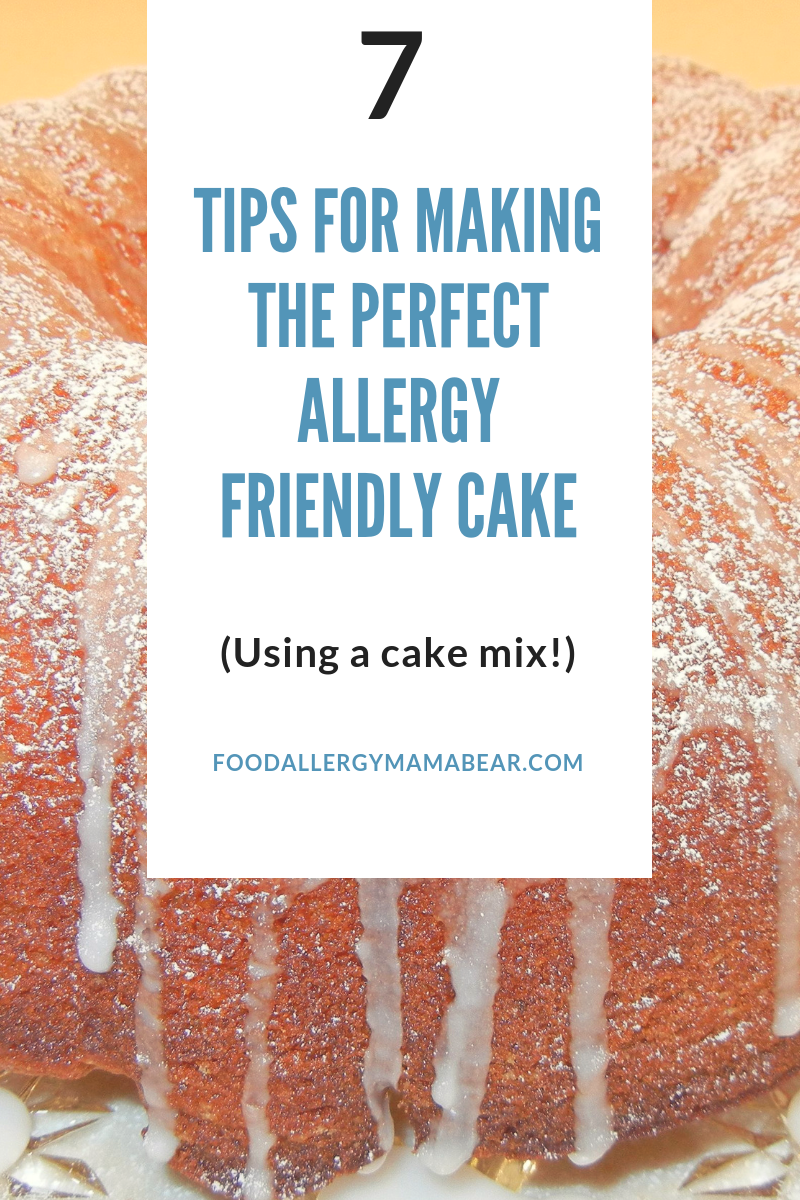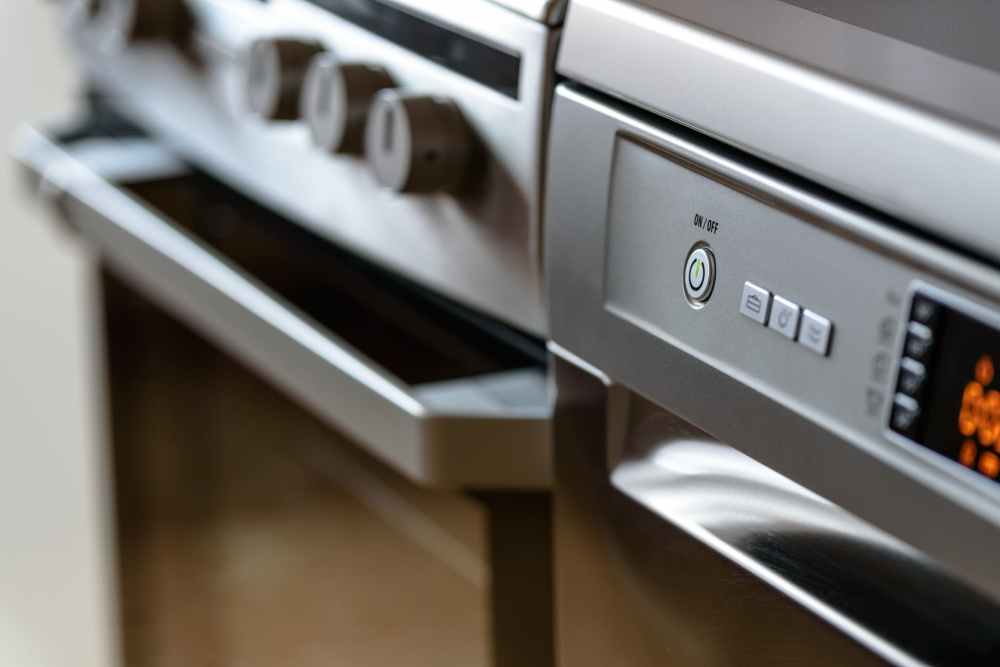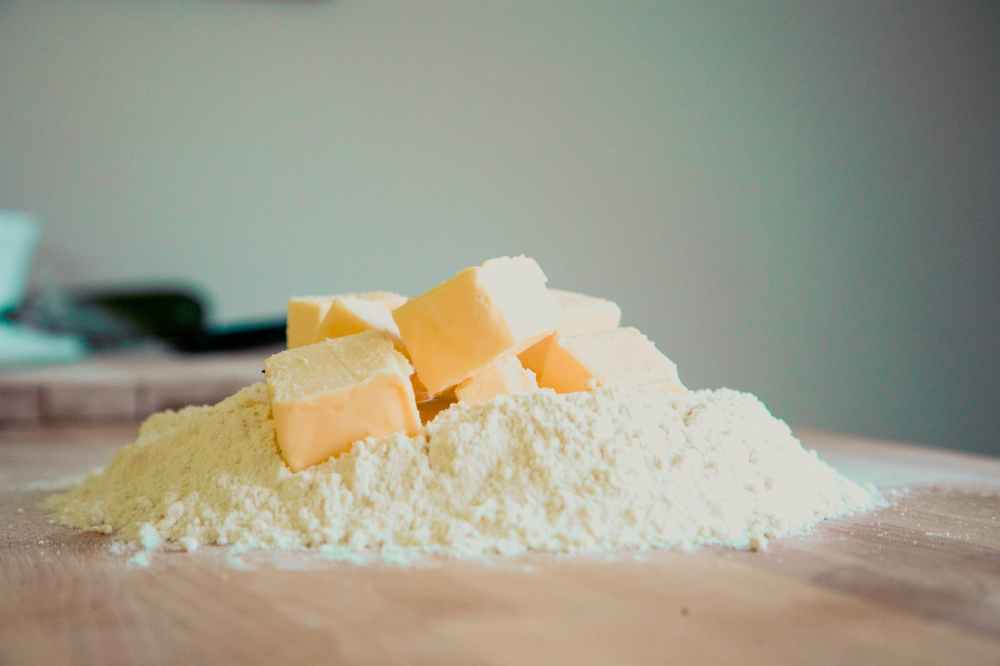
I have a confession to make–I love cake mixes. There was a time when a part of me was hesitant to admit that, but those days are long gone.
Having a child with multiple anaphylactic allergies means that our family rarely eats out (maybe a couple of times a year), so I make every single meal our family eats. No matter how tired, or busy, or stressed I may be, a huge chunk of my time will inevitably be devoted to planning, prepping, and cooking meals. Don’t get me wrong—there are definitely some positives to be found in not eating fast food all the time—but sometimes, this gets to be exhausting.
When I manage to find something that comes from a box that is not only safe, but also tasty, I get really excited about it, because I know that it will save me precious time, and energy (two things I can’t seem to get enough of). There are times, when I am tired and/or busy, and I truly appreciate the convenience afforded by a cake mix.
While making a cake from scratch will always lend the best results, you can make truly delicious desserts using a gluten-free cake mix, with a few basic alterations. Many of these mixes (ingredient wise) are free of most (if not all) common allergens, and with safe substitutions they can yield results that are potentially free of dairy, eggs, nuts, and/or soy as well as wheat/gluten.
While preparing a cake mix may seem like pretty straight forward business, I encourage you to look over the following list, and bear the following tips in mind the next time you grab that box of GF cake mix from your pantry. I promise, you won’t regret it. The tips I am about to share with you are the result of many, many hours of experimentation in the kitchen.
Now, here are simple ways to make a gluten free cake mix delicous and allergy friendly! Enjoy!
1.) Know your substitutions: So you’ve found a gluten free cake mix, and all of its ingredients check out. What now? If your family is like ours, and manages multiple food allergies, you probably can’t use the additional ingredients recommended on the box (such as eggs, or cow milk). If you’ve been following my blog, you know that I have talked a lot about substituting for common allergens (such as milk), and that I recommend using different substitutions for different uses. Knowing what you can use, and where you can use it can go along way into identifying which cake mixes will be a good option for your particular dietary needs. When purchasing a cake mix, you need to not only read the label, but also the instructions, always bearing in mind what you could potentially swap out.

2.) When substituting, always use non-dairy milk in place of water: A common complaint I hear about gluten free cake mixes (and gluten free baked goods, in general), is that they are too dry. This can easily be improved by using milk in lieu of water. My favorite milk to use in cake mixes is coconut, but you can use any non-dairy milk. Replace water with milk at a 1:1 ratio.

3.) For maximum flavor, use vegan butter to replace butter, margarine, or oil: Most GF cake mixes will call for either a stick of butter (softened), or oil. If the mix you are using calls for softened butter, substitute softened vegan margarine. If it calls for melted butter, or oil, substitute melted vegan butter. This step is pretty straightforward; just be certain not to substitute melted margarine for softened, or vice versa (mixing these up can result in a product that is too oily or dry).

3.) Ignore the mixing guidelines on the box: Another common complaint about gluten free baked goods, and GF cake mixes, is that they are too heavy, dense, and/or do not rise well. This is especially true if you are unable to use eggs in your baking. One of the easiest things you can do to help your GF baked goods rise is to beat your batter, and beat it very well. When baking with wheat flour, over mixing or overbeating your batter is a real concern, and can result in a deflated cake. When baking gluten free, the opposite is true. Mixing for an extended period of time actually improves the elasticity of the starches in your batter, and will consequently help your cake rise (with the added benefit of improving its crumb and texture). Most cake mixes will tell you to beat on low speed for 30 seconds, then on medium speed for two minutes. You will likely have better success, however, if you ignore these instructions, and beat on low speed until combined, then medium speed for 3-5 minutes.

4.) If you are baking egg free, choose your egg substitutes wisely when baking your cake: This tip is something of an elaboration on the first one on this list. When baking without eggs, know what to use, and when to use it. One of the most common baking substitutions for eggs is applesauce. Generally speaking, this is a great option, but it if too much is used it can result in too much moisture, a strong apple flavor, and/or a dense cake that won’t rise well. If you are using a cake mix that calls for three or more eggs, I recommend using an egg replacer for a lighter consistency. If you are making a cake that has a mild flavor, such as a white or yellow cake, applesauce can be overbearing, so I would recommend using an egg replacer there as well. Conversely, if you are making a cake with a strong flavor (such as chocolate), applesauce is a great option, and will make a moist cake, without imparting a strong taste.

5.) Check to see if your cake mix contains xanthum gum; if it does not, add it: Xanthum gum is widely used in gluten free baking. Most gluten free cake and baking mixes already contain it, but if the one you are using does not, adding a teaspoon of xanthum gum can greatly improve your cake’s texture.

6.) Don’t be afraid to add ingredients to your mix: Be adventurous with your add-ins! Here are a few ideas for ingredients you can add to a gluten free cake mix to jazz it up up a bit:
- Pureed, dried, or freeze dried fruit
- Seeds (such as Sunflower or pumpkin)
- Instant Jello
- Dairy free chocolate chips (try Semi-Sweet, Dark, or White chocolate)
- Spices (such as cinnamon, allspice, nutmeg, cloves, or pumpkin pie spice)
- Raisins or Craisins
- Sprinkles
- Fresh berries
- SunButter
After you have throughly mixed your batter, fold in any additional ingredients before pouring into your pan. Just be certain not to add anything that contains too much liquid to your batter without first reducing the amount of overall liquid in the recipe.

7.) Let your batter rest: I know it sounds almost too good to be true, but allowing your batter to rest in the pan for for a while before baking is one of the most beneficial things you can do for your gluten-free cakes. This resting time gives the starches in your cake mix some time to stretch before baking. This will greatly improve the texture of your cakes and cupcakes. This isn’t a suggestion you will see on the back of any cake mix box, but it will absolutely benefit your final produt. The ideal resting time for most gluten free batters is about 10-30 minutes.

There you have it—7 simple ways to make a gluten free cake mix allergy friendly, and delicious! As always, thank you for reading, and happy baking! 🙂


I love adding dairy free chocolate chips AND using almond or coconut milk. I am definitely going to look into SunButter! 🙂
LikeLiked by 1 person
Those are two of my favorites as well! 😊
You should definitely give Sunbutter a try. It’s really yummy! If you can have soy, I would also recommend Wow butter (soy nut butter). They are both really tasty additions to baked goods, especially when combined with dairy free chocolate chips 😊
LikeLiked by 1 person